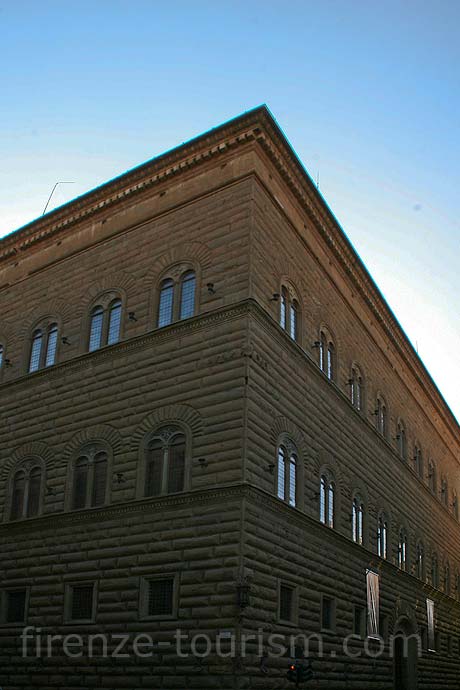Palazzo Medici Riccardi

Long before moving to the Palazzo Vecchio and, subsequently, to the Palazzo Pitti, the Medici used to live in the Palazzo Medici, also known as Palazzo Medici Riccardi (due to the fact the Riccardi family bought the palace in 1655) which is held in great respect in Florence, architecturally speaking and not only. It is ascertained the artistic asset of the Palazzo Medici Riccardi used to be a lot larger than it is nowadays, but a significant part of it was lost to rough historic circumstances.
However, the story of this paradigmatic palace of Florence begins with Michelozzo being commissioned in 1445 (the construction took 15 years) by Cosimo the Elder de Medici to built a royal residence avoiding, at the same time, the temptation of making it to ostentatious in view of not to hurt Florentines’ republican pride. The result was a splendid structure combining a Romanesque style with elements inspired by the works of Brunelleschi (who, for that matter, excelled himself in working with the Romanesque architectural logic and who, furthermore, presented a project for the future building to Cosimo the Elder, a project which was rejected in favor of the one conceived by Michelozzo). Given the artfulness of the work, the Palazzo Medici Riccardi is said to have set the fashion for the future palace construction spree Florence saw from the Renaissance onwards. The inner square courtyard of the Palazzo Medici Riccardi is, again, designed by Michelozzo, but before entering the palace, one should also focus on the façade, exemplary by its artfulness.

The Medici Museum on the ground floor of the palace consists of the few surviving rooms from when the Medici used to live here, and despite its lack of coherence, it does feature some major highlights, such as Filippo Lippi’s Madonna and Child and Jacopo da Empolo’s Wedding of Catherine de Medici. The mortuary mask of Lorenzo the Magnificent is also displayed in this museum, but what one should understand of this museum is it speaks more about the presence of the Medici in Florence than about the logic of a mainstream art gallery. The Chapel of the Magi, the palace chapel, is considered by some the ultimate highlight of the Palazzo Medici Riccardi, with its magnificent frescoes created by Benozzo Gozzoli, depicting the Journey of the Magi. Besides the artfulness as such poured into this masterpiece (which, some say, is more famous than its creator), the fresco also fetches by its fine condition.
Filippo Lippi’s Nativity stands as the altarpiece of the chapel. Moving further, Biblioteca Riccardiana e Moreniana is another significant highlight of the palace, containing a paper and book asset which amounts to some 50000 volumes and 4000 manuscripts. But besides the documentary worth of this library, the spot is also valuable as to the fresco which embellishes its ceiling, a work by Luca Giordano depicting an allegory of the man being freed by his intellect from the burden of ignorance. Furthermore, the Palazzo Medici Riccardi benefits from an excellent location on the tourist circuit of Florence, minutes northwestwards from Piazza del Duomo and close to Piazza San Lorenzo and its inner attractions. Certain exhibits are occasionally held here.
- Name:
- Palazzo Medici
- Address:
- 1 Via Camillo Cavour, Florence
- Telephone number:
- 0039 (0)55 2760 340
- Website:
- www.palazzo-medici.it